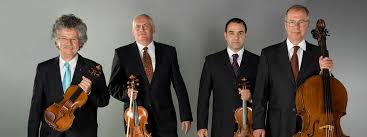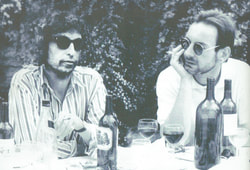Over the years, the couple have brought to Leamington and Warwick some of the great quartets, many of them (the Atrium, the Petersen) appearing long before they achieved national and international critical acclaim.
Last night, we saw the return to Leamington of the Kodály Quartet from Hungary. The Kodály are emphatically not up and coming – they celebrated fifty years of playing together in 2016 – but despite this, and despite their mittel-European tradition, they always surprise and delight.
They began with Haydn, proving that they can play this kind of thing standing on their heads. There is a pattern emerging throughout the chamber music world of giving us a example of Haydn’s extraordinarily prolific output. Like the Dead opening with Bertha or Bob with Crash on the Levee, Haydn serves as a warm-up for many quartets, a plate of nibbles before the main course.
And so it was last night. But the Kodály’s main course was remarkable. I had never heard of Erno Dohnanyi before I saw the programme and this is very much my loss. His String Quartet #2, composed in 1906, was a revelation – by turns haunting and menacing, passionate and angry, evil and innocent, intense and sensitive.
The violinists Attila and Ferenc, the latter looking like a young Lewis Litt for you fans of Suits, swapped roles for this piece. But for me the highlights were the drive of the cello in the second movement and, in the finale, the opportunity for the viola to take centre stage. From my seat, directly behind the viola player, János appeared as if a Soviet-era discus thrower, all massively broad shoulders and close-cropped hair. But the sound he produced was beautiful.
Richard’s programme notes quote a claim that this is “one of the greatest, if not the greatest, post-Brahms Romantic quartet”. I don’t know enough to make that kind of judgement but I do know that, not least in its emotional range, it is close to a masterpiece. And I also know that, in their performance last evening, the collective virtuosity of the Kodály did it justice.
I am grateful I was there. Grateful to the quartet for their performance. And grateful to Richard and Veronica who make this kind of experience possible time after time.
Today from the everysmith vaults: I have no Dohnanyi in the vaults (yet), but I do have the Kodály playing string quartets by Kodály. So that’s what I’m listening to as I type.






 RSS Feed
RSS Feed